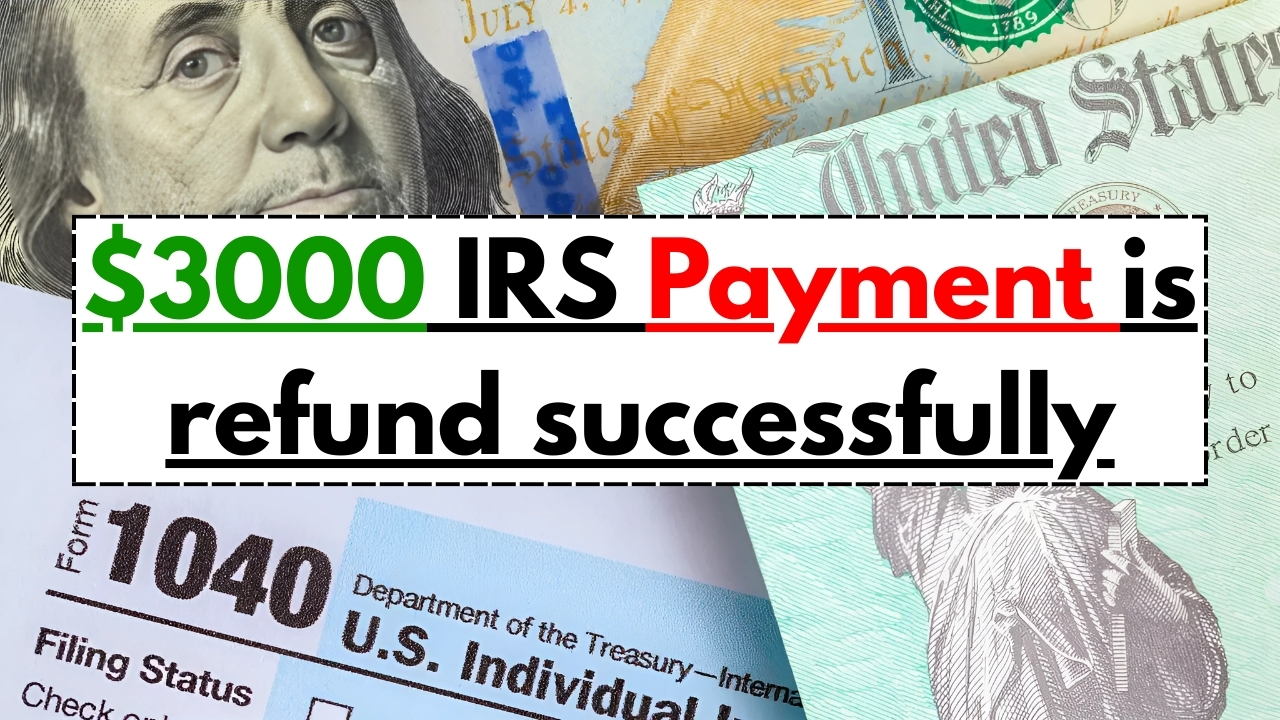IRS Payment : Checking your bank balance lately might reveal a pleasant surprise. The IRS has been distributing substantial refund payments, with many taxpayers discovering deposits around $3,000 appearing without prior notification. These aren’t standard tax refunds following April filings – they represent corrections, adjustments, and recalculations from various federal programs that the agency has been processing behind the scenes.
The widespread confusion makes complete sense. Regular refunds follow predictable timelines after submitting returns. These payments emerge from different circumstances entirely. Some connect to unemployment benefit taxation changes, others stem from healthcare subsidy corrections, and many result from stimulus payment reconciliations. The IRS computers have been methodically reviewing accounts, identifying discrepancies where taxpayers deserve additional funds.
Why These Refunds Are Happening Now
Multiple factors drive these unexpected payments. Pandemic-era tax complications created numerous overpayment situations that are only now being resolved. (IRS Payment) Remember those unemployment benefits that became partially tax-free after people had already paid taxes on them? The IRS continues processing those adjustments automatically, returning money to affected taxpayers without requiring any action.

Mathematical errors on previous returns trigger many refunds. Tax law complexity increased dramatically recently, causing widespread calculation mistakes. When IRS systems detect errors that resulted in overpayments, they generate automatic refunds. Nobody needs to file amendments or make phone calls – the computers handle everything internally.
Recovery rebate credits constitute another major source. Millions of eligible Americans never received complete stimulus payments during initial distributions. The IRS cross-checks payment records against eligibility databases, catching gaps where qualified individuals missed payments. (IRS Payment) These discoveries generate automatic deposits, often surprising recipients who assumed that ship had sailed.
Verifying Your Payment Status Immediately
Confirming your refund requires accessing the correct IRS tools. The standard “Where’s My Refund” portal helps with regular returns, but these special payments often appear differently in the system. You’ll need precise information – Social Security number, filing status, and refund amount – though many recipients don’t know amounts until deposits arrive.
Your IRS online account offers deeper insights than basic tracking tools. After logging in, navigate to payment history sections where recent transactions appear with identifying codes. Look for entries labeled as corrections, adjustments, or supplemental refunds. These codes reveal important details about payment origins and purposes.
Banking records sometimes show payments before IRS systems update. Direct deposits display “IRS TREAS 310” followed by descriptive codes. “TAX REF” indicates standard refunds, while variations like “TAXEIP” suggest stimulus-related payments. Understanding these codes helps identify your payment’s nature.
$1400 Check Payment are finally credited – Check account status now
IRS Payment Essential Steps After Receiving Your Payment
Discovering unexpected money demands measured response, not immediate celebration. First, verify legitimacy through official IRS channels only. Scammers exploit confusion around government payments, making confirmation crucial. Ignore emails or calls claiming to explain payments – trust only IRS.gov resources.
Document everything meticulously. Save deposit confirmations, download account transcripts, and preserve any IRS correspondence. Tax matters can resurface years later, making organized records invaluable. Create dedicated folders for this refund, treating documentation as seriously as regular tax papers.
Consider future tax implications carefully. While most refunds return your own overpayments, some aspects might affect upcoming returns. Interest payments on delayed refunds, for instance, count as taxable income. Understanding your payment’s exact nature prevents next year’s surprises.
The IRS usually sends explanation letters within weeks, though sometimes money arrives first. These notices detail calculation methods, payment reasons, and required responses. Keep these letters permanently – they’re official transaction records that might prove necessary for future tax situations.
